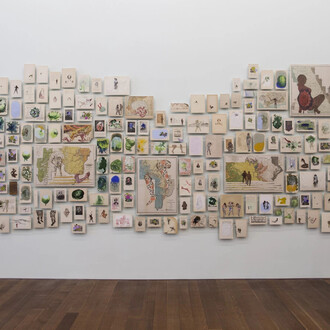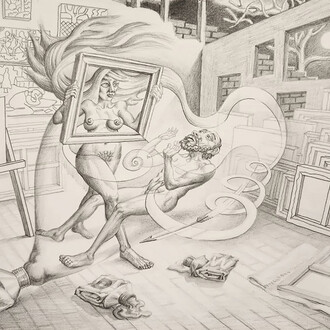The past returns as over 550 works from 4,000 years of artistic achievement in the Mediterranean region come together in the beautiful Mary and Michael Jaharis Galleries of Greek, Roman, and Byzantine Art. With over 150 exceptional loans from private collections and public institutions around the world complementing the museum’s own rich holdings, this inaugural display allows the Art Institute to present for the first time the origins and early development of Western art from the dawn of the third millennium B.C. to the time of the great Byzantine Empire.
Designed by Kulapat Yantrasast of wHY Architecture, the new sunlit galleries encircling McKinlock Court take visitors on a journey through the beginnings of Western art. Opening the installation are the rare Mesopotamian Statuette of a Striding Figure from 3000/2800 B.C. and the sublimely abstracted Female Figure from 2600/2500 B.C., reminders that the rich influences of early Mediterranean art extend back to the highly developed cultures of the ancient Near East and forward into 20th-century modern art. From these anchors, a chronological display follows—from beautifully decorated Greek vases and the precious metals of the Hellenistic period to Etruscan bronze and terracotta and the opulent décor and realistic portraiture of Rome and finally to Byzantine art and the new aesthetic developed under the growing power of the Christian Church.
The Jaharis Galleries’ stunning display of ancient artwork is enriched by two additional resources. One gallery offers insight into the fascinating conservation of the objects on display, while an interactive multimedia program stationed at 16 kiosks throughout the galleries provides information on selected objects, ranging from basic introductory facts to in-depth details on the artworks’ function, form, subject, historical context, technique of manufacture, and relationships to particular people, places, and objects. Also available is a richly illustrated publication, Recasting the Past, authored by Karen Manchester, chair and curator of ancient art, Department of Ancient and Byzantine Art, with an essay by Karen Alexander.
















